
OHIO'S HISTORICAL TIMELINE
Course Overview
The fourth-grade year focuses on the early development of Ohio and the United States. Students learn about the history, geography, government and economy of their state and nation. Foundations of U.S. history are laid as students study prehistoric Ohio cultures, early American life, the U.S. Constitution, and the development and growth of Ohio and the United States. Students begin to understand how ideas and events from the past have shaped Ohio and the United States today.
Unit Overview – Ohio’s Historical Timeline
In this unit, students will be learning that the order of significant events in Ohio and the United States can be shown on a timeline. Chronological thinking helps students develop a clear sense of historical time in order to recognize the temporal sequence of events in history. Students will learn how to construct timelines with appropriate titles, evenly spaced intervals for years, decades and centuries, and events in chronological order. As students place events on timelines, they will begin to understand cause-and-effect relationships among events and gain early experience with the conventions of BC/BCE and AD/CE.
Vocabulary:
timeline - a graphic representation or picture of events placed on a line in chronological order.
chronological order - the arrangement of things following one after another in time.
WHAT IS A TIMELINE?

A timeline is a graphic representation or picture of events placed on a line in chronological order.
A timeline can be written horizontally:

or vertically:
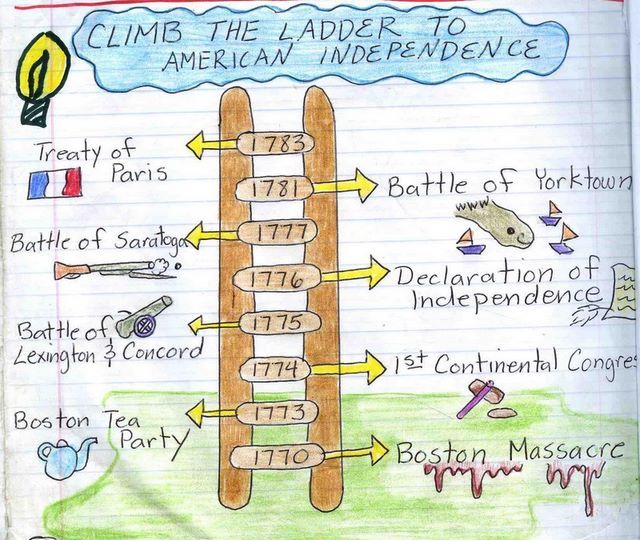
The timeline pictured below represents six different events in chronological order from left to right. Each event has the name of the event and the year it happened. For example, Andrew Jackson was elected President in the year 1828. This event happened after the steamboat’s debut in Nashville in 1819 and before the Indian Removal Act of 1830. This is an example of an illustrated timeline because some of the events also include a picture to illustrate them.
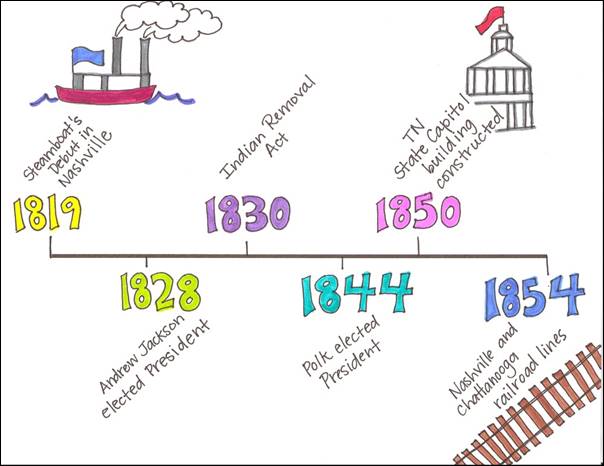
Let's practice! Print the Timeline Practice Sheet and match the events from the illustrated timeline above to the year they happened.
Now, let’s make our own timeline about ourselves! Using the information we’ve learned so far, print the my life timeline and fill in each square by drawing or describing events from your life. Or feel free to draw your own timeline if you would like! Let’s take a look at an example of a personal timeline created by Peyton:
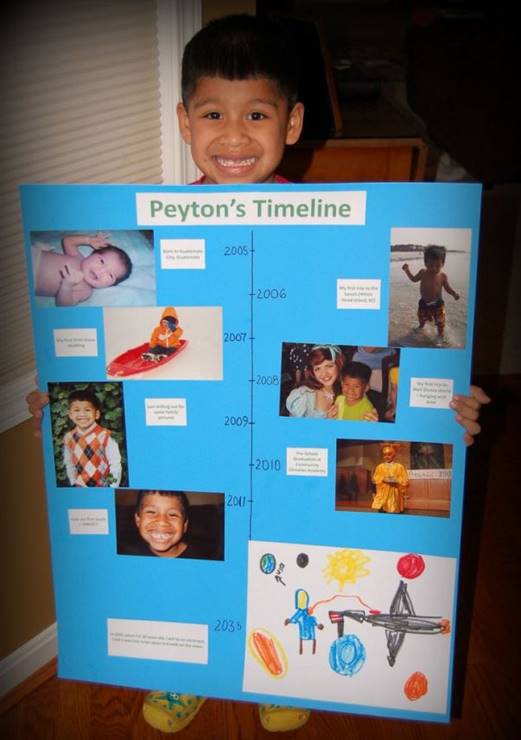
You can also make a poster timeline like Peyton did if you would like. If possible, you may want to do this with your family as you recall fun memories and events you have experienced thus far in your life!
Units of Time
The basic units of time that we are familiar with from the smallest unit to the greatest unit are second, minute, hour, day, week, month, year, decade and century. Timelines usually focus on the last three of these: years, decades, and centuries.
1 year = 365 days
1 decade = 10 years
1 century = 100 years or 10 decades
We can think of units of time in much the same way that we think about certain kinds of money like coins.
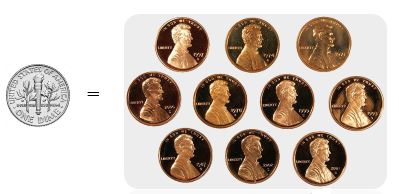 1 penny = 1 cent
1 penny = 1 cent
1 dime = 10 pennies
1 dollar = 100 pennies or 10 dimes
Let's practice! Answer these math word problems.
If I went to visit my grandma on December 24, 2018 and then did not visit her again until December 24, 2019, how much time would have passed? 365 days or one year
A law was passed in 1809. It was revised or changed in 1909. Which of the following correctly describes how much time has gone by between the passing of the law and the change in the law?
a. One year or 365 days
b. One decade or ten years
c. One century or 100 years
I am ten years old. That would mean I am one ___________ old.
a. year b. decade c. century
Timelines are often divided into years, decades, or centuries:
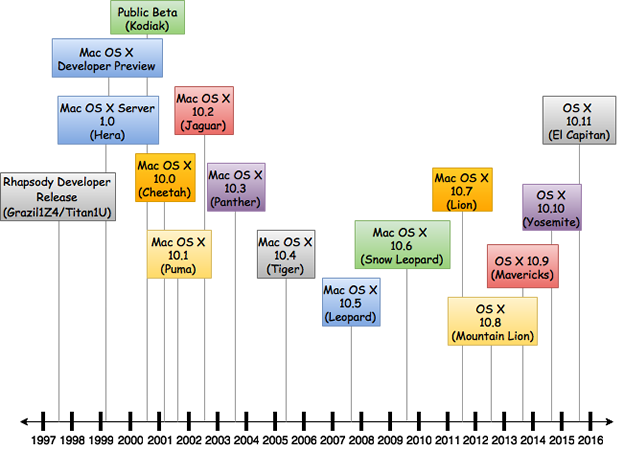
Shown above is a timeline that depicts changes made to computer software each year from 1997 through 2016!
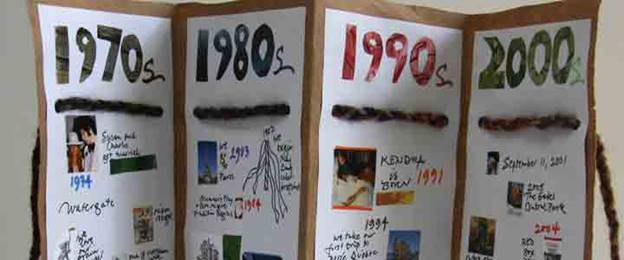
The accordion timeline above is divided into decades. In other words, the years on the timeline are labeled every ten years.
Below you will see another example of a horizontal decade timeline:

Finally, the timeline below illustrates events that have occurred over a longer period of time… centuries or hundreds of years! Check out this timeline that depicts what has happened over the centuries regarding the four industrial revolutions:
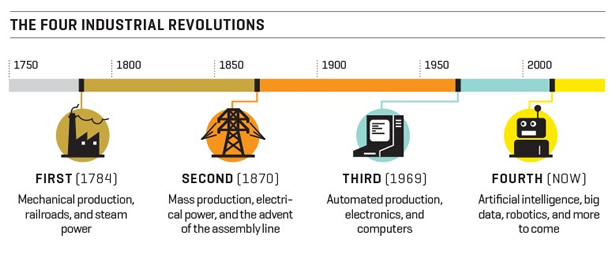
Let's practice! Print the two timelines below and fill each of them in with dates according to what type of timelines they are.
Decade timeline practice:
Write in the years for a timeline that would show events that occurred over decades as airplanes evolved over time:
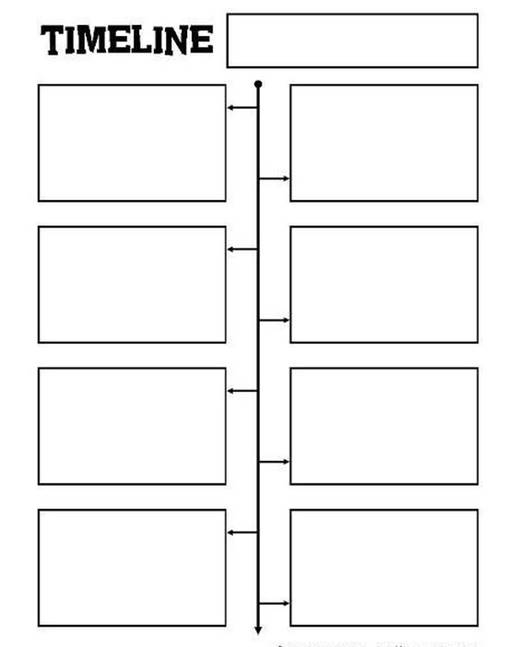
Century timeline practice:
Write in the years for a timeline that would portray changes in a city’s population every hundred years or a century:
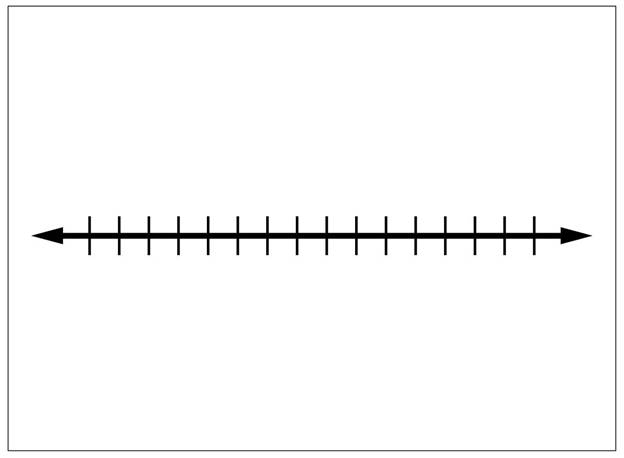
BC, AD, BCE, and CE
When viewing timelines that describe events that happened long ago, we need to use additional terms to distinguish whether we are referring to the years before or after what we call year 1.
Vocabulary:
BC - an abbreviation for “before Christ” (used in indicating dates). The abbreviation BC “before Christ” is always placed after a date or century: Cleopatra lived from 69 to 30 BC The war took place in the first century BC.
BCE - an abbreviation for “Before (the) Common Era”. A secular or non-religious alternative to BC.
AD - an abbreviation for “Anno Domini” which is Latin for “In the year of the Lord”; since Christ was born. AD is placed before rather than after a date: Charlemagne was born in AD 742.
CE - an abbreviation for "Common Era" and a secular or non-religious alternative to AD.
You will see BC and AD sometimes spelled with periods (B.C. or A.D.) and sometimes without.

Below is an example of a timeline that uses both B.C. and A.D. Notice how BC comes after the year while AD comes before the year:
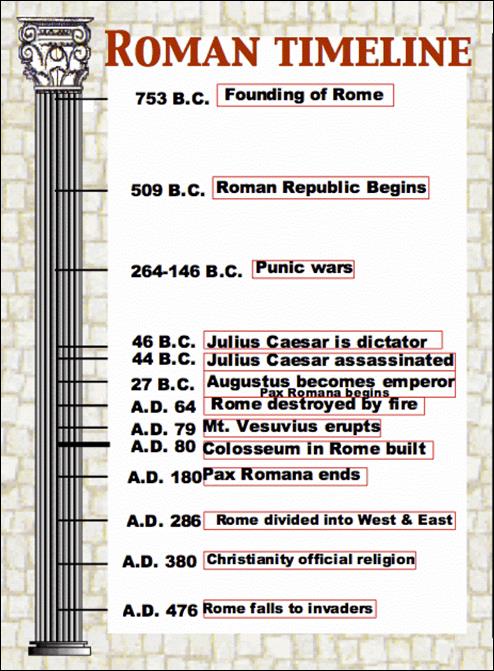
The timeline below uses BCE and CE. Notice that unlike AD, CE comes after the year.
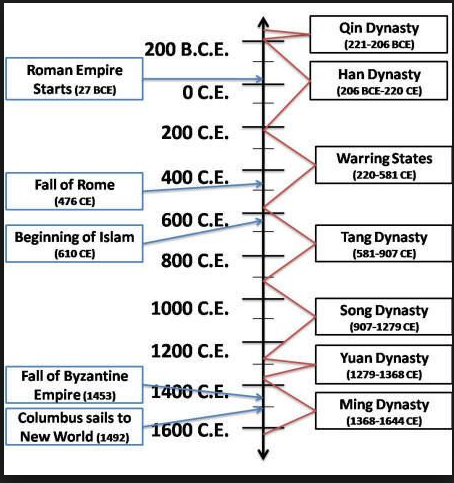
Review:
After completing this unit, review the following checklist to make sure you can do all of the following:
_I can construct a timeline of significant events in Ohio and the United States to demonstrate an understanding of units of time and chronological order.
_I can recognize the chronological order of events in history.
_I can differentiate time span using years, decades and centuries.
_I can list events in historical order.
_I can place events on a timeline.
_I can arrange events from a timeline in order.
_I can create evenly spaced intervals.
_I can write a title for a given time line.
_I can construct a time line based on given information.
Additional Resources:
For additional practice, click on Order of Events.